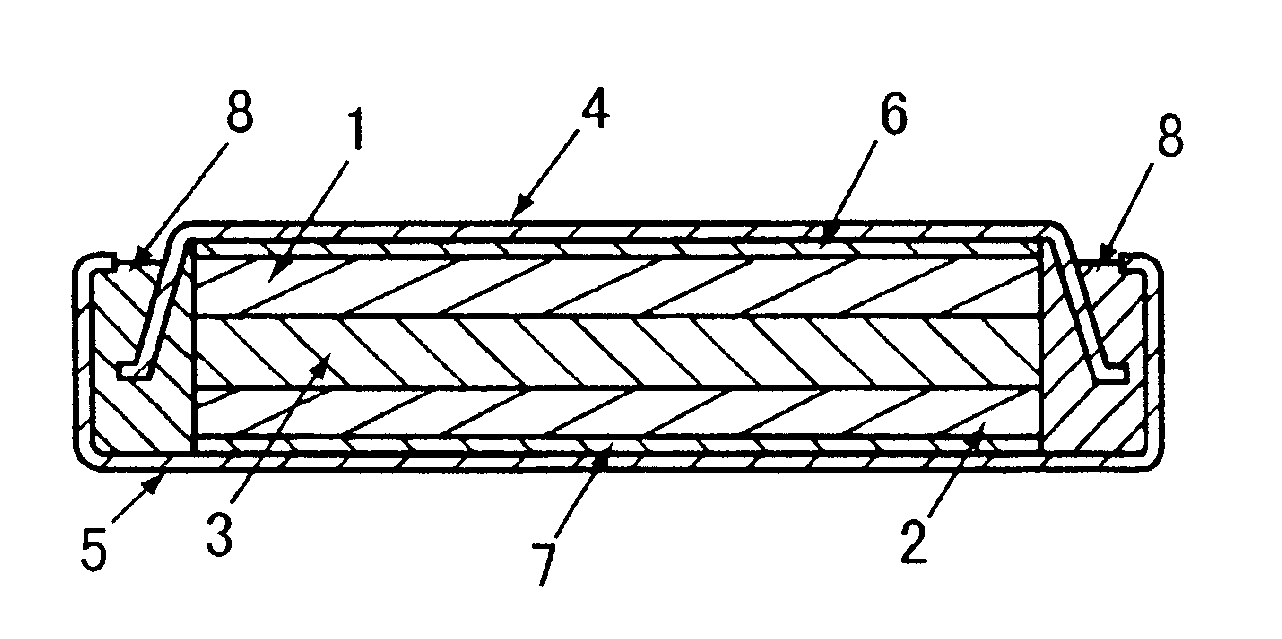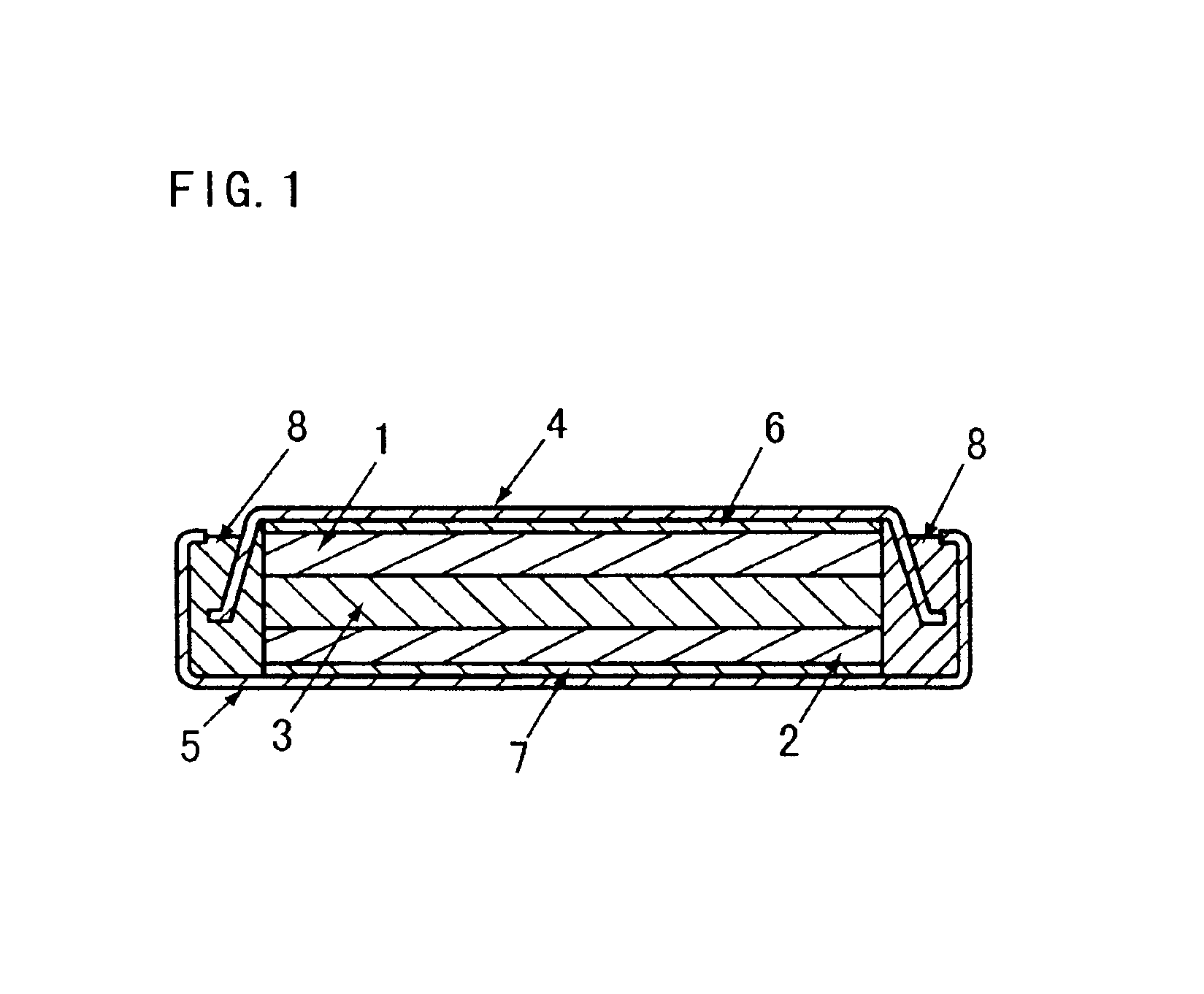Method for preparing electrode material for lithium battery
a lithium battery and electrode material technology, applied in the field of preparing an electrode material for a lithium battery, can solve the problems of short circuit between the internal and external electrodes, and the failure of alloying negative electrodes to provide sufficient cycle characteristics, so as to improve the adhesion of the thin film, reduce expansion and shrinkage, and improve the effect of adhesion
- Summary
- Abstract
- Description
- Claims
- Application Information
AI Technical Summary
Benefits of technology
Problems solved by technology
Method used
Image
Examples
experiment 1
[0064](Experiment 1)
[0065]Fabrication of Negative Electrode
[0066]A microcrystalline silicon thin film was deposited on a rolled copper foil (about 18 μm thick) as a substrate by a CVD process using silane (SiH4) as a source gas and hydrogen as a carrier gas. Specifically, the copper foil as a substrate was placed on a heater within a reaction chamber and an interior of the reaction chamber was evacuated by a vacuum pumping apparatus to a pressure of 1 Pa or below. Thereafter, the silane (SiH4) gas as a source gas, together with the hydrogen (H2) gas as a carrier gas, were introduced from a source gas inlet port. The heater was then operated to heat the substrate to 180° C. The vacuum pumping apparatus was controlled to adjust a degree of vacuum to a reaction pressure, a radio frequency wave was generated by a radio frequency power supply, and the generated radio frequency wave was introduced from an electrode to induce a glow discharge. The details of the thin-film forming condition...
experiment 2
[0091](Experiment 2)
[0092]A substrate, i.e., a copper foil was treated at its surface by plasma or ion irradiation, prior to deposition of a microcrystalline silicon thin film thereon, to study the effect of this pretreatment. A rolled copper foil similar in type to that used in Experiment 1 was employed to serve as the substrate.
[0093](Pretreatment by Plasma Irradiation)
[0094]The copper foil serving as the substrate was placed on a heater within a reaction chamber and then an interior of the reaction chamber was evacuated by a vacuum pumping apparatus to a pressure of 1 Pa or below, analogously to the procedure used to fabricate the electrode a1 in Experiment 1. Subsequently, a hydrogen (H2) gas at a flow rate of 200 sccm was introduced into the reaction chamber. The heater was operated to heat the substrate to 180° C. Then, a 555 W ratio-frequency power was applied to produce a hydrogen plasma with which the copper foil was irradiated for 10 minutes. Thereafter, a microcrystalline...
PUM
| Property | Measurement | Unit |
|---|---|---|
| Thickness | aaaaa | aaaaa |
| Surface roughness | aaaaa | aaaaa |
| Grain size | aaaaa | aaaaa |
Abstract
Description
Claims
Application Information
 Login to View More
Login to View More - R&D
- Intellectual Property
- Life Sciences
- Materials
- Tech Scout
- Unparalleled Data Quality
- Higher Quality Content
- 60% Fewer Hallucinations
Browse by: Latest US Patents, China's latest patents, Technical Efficacy Thesaurus, Application Domain, Technology Topic, Popular Technical Reports.
© 2025 PatSnap. All rights reserved.Legal|Privacy policy|Modern Slavery Act Transparency Statement|Sitemap|About US| Contact US: help@patsnap.com


